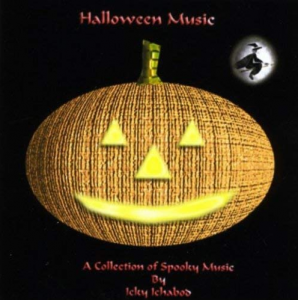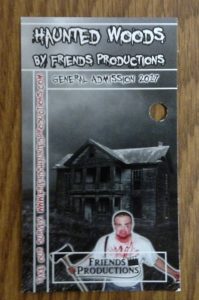Icky Ichabod
Official Site
Halloween Music, self-release 2009
The Haunted Organ, self-release 2016
Darkscape, self-release 2016
Hall of Mysteries, self-release 2016
Kevin J Gardner created his “Icky Ichabod” identity in 2009 but had been involved in music long before then. His compositions have been heard in numerous radio spots, films and television shows. But being Icky Ichabod let him stretch his legs. Not only could he create spooky music for Halloween and haunted houses, but he also released the book Paranormal Poems in 2014! So let’s start at the very beginning with his debut 2009 release, Halloween Music.
“Samhain” starts the album off with low piano work. Creepy light backing tones with touches of percussion soon join in. While the piano work changes things up, the rest turns into the very definition of “cacophony.” But then it dies down until only soft, squeaking creaks and gusts of wind are left with the piano. Things pick up for a more mild version of the cacophony from earlier. Only this time some strange synth tones join in as well before the addition of scattered light notes lead to a great closing fade. Chimes reminiscent of a music box are combined with a soft, pounding beat in “Skeleton Bones.” Some whispering effects appear at one point and snappy percussion foreshadows the change in chimes. Odd, somewhat sci-fi tones get a soft solo before chimes and otherworldly effects take over. Soft drums and a coughing laugh can be heard too. Although the snaps vaguely suggest rattling bones, the other parts make it possible to work in a haunted nursery. You just need to make sure you have a clown doll with an arm positioned like it’s coughing and a toy robot to match up with certain parts of the track. “The Thinning Veil” offers moody chimes and backing drum beat you can dance to! There are brief recurring appearances by breathy wails and a fuzzy drum machine. Chirping and an otherworldly effect like passing through another dimension make repeated appearances throughout the track. They’re also joined by chimes and snippets of clinking noises. It’s just what your vortex tunnel needs! “Ghost Ship” makes interesting use of synth effects and multiple pianos, along with the occasional drum beat. A tambourine briefly joins in to pick things up while cymbals and other percussion effects join for a spell. The tambourine then returns with a vengeance and new piano variations join in to create the feeling of distant lands. The complete feel of the track creates the feel of a ship in rolling waves without using any sound effects. It appropriately dies down and fades out like a ghost. One use for this track would be to play it in a room decorated to look like the inside of a pirate ship. But others might prefer to construct a prop with dead pirates hanging from it and play the track soft enough so people only hear it when they get close to the prop. Cymbals, drums, piano work and a backing beat take us into “Ripper.” Very fuzzy tones join in, along with some frantic piano work. This gives the track a sense of fleeing (especially when things up pick up). It all builds up, only for a piano solo to fade us out. This could be used to enhance a chase or to liven up a static scene based on Jack the Ripper. Such a scene would be a great way to make a staircase spooky. You can either print or make your own sinister silhouette. If you want to prevent people from going up the stairs, block it off with some caution tape and leave out a prop newspaper nearby with a headline about a recent string of killings similar to the original ripper murders. Having another article whose title suggests a supernatural connection will add to the effect.










